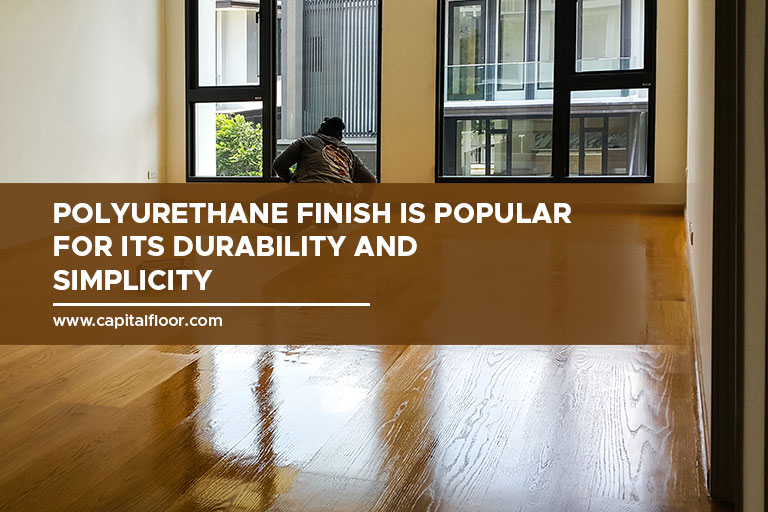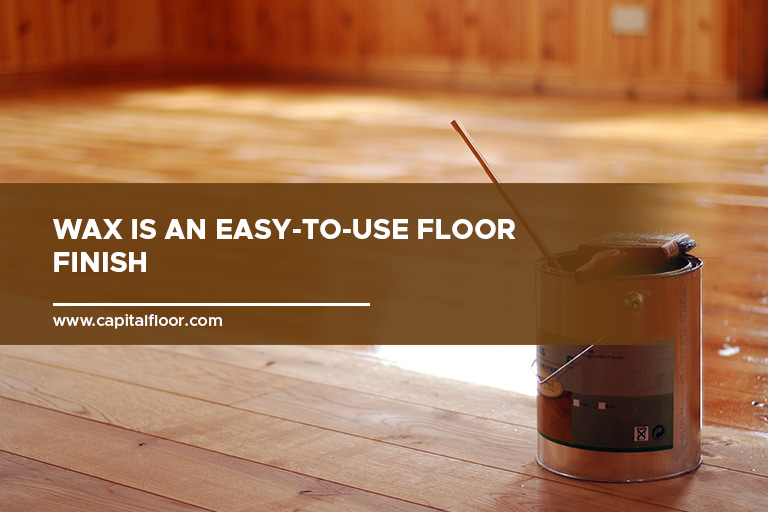Our showroom is open to the public. Please click HERE for more details.
Our showroom is open to the public. Please click HERE for more details.
Whether it be a dark walnut, a rich cherry wood, or a classic oak, they all have one thing in common — they require a finishing coat for protection to maintain their pristine appearance.
It might be overwhelming to pick the ideal top coat. After all, it took a lot of consideration to select your preferred wood. The convenience, durability, and even glossiness of hardwood floor finishes are among the most significant aesthetic factors. Choosing the flooring finish could either protect or destroy this investment.
So, what type of finish is best for wood floors? Here are some of the most common types of floor finishes to help you decide.
One downside of this finish is that it emits extremely high amounts of Volatile Organic Compounds (VOC) and has a powerful odour. You’ll have to leave your home for a few days while the floors cure. Additionally, you’ll need full-face protection and sufficient ventilation when applied. An acid-cured floor is also difficult to repair or refinish once it has been installed, but because of its endurance, you shouldn’t have any problems with damage or deterioration under usual circumstances.
If you decide to fix a damage or change to a different finish in the future, aluminium oxide finish is extremely difficult to remove or restore. Most of the time, you’ll need a professional to do the job. Still, aluminium oxide lasts for about 25 years and is generally low maintenance.
As the name implies, it absorbs moisture from the air to cure, so the humidity on the day of coating can have a serious impact on its performance. If the air is excessively dry, the finish won’t cure properly. If the air is too humid, it may dry out before it has covered the floor entirely. Because of these disadvantages, moisture-cure urethane mostly has commercial applications, such as bowling alleys, dance floors, and restaurants, where its resilience to damage and moisture, extremely glossy look, and durability exceed its drawbacks.

Oil-based polyurethane floor finish is usually made of linseed oil, artificial resins, and plasticizers. It is known for its deep, warm, amber tone, and can get even more yellow over time. Due to its strength and longevity, it is a preferred finish for commercial buildings, but many homeowners also use it in high-traffic sections of their homes. Fortunately, because of their durability, you won’t need to refinish the floors as frequently as compared to other options. Additionally, it is simple to clean and maintain.
This finish emits a lot of VOCs and has a strong odour. The standard recommendation is for 2 to 3 coats total, with each coat drying in an average of 8 to 10 hours. You must wait at least 48 hours after the last coat before stepping on the floor with shoes on and at least 4 days before restocking the rooms with furniture.
Oils that penetrate the wood’s pores help stop scratches and other types of damage. Unfortunately, despite their naturally charming appearance, they don’t last long under heavy foot traffic, and you may need to refinish them every 3 to 5 years. You may also need to add another coat of wax for additional protection.
This specific hardwood floor finish is also prone to stains and water spots and is vulnerable to alcohol and ammonia. Although it doesn’t withstand heavy floor usage quite as well as polyurethane, it is relatively simple to touch up — simply apply a fresh coat of shellac as needed.
Water-based polyurethane is an extremely resilient finish that withstands moisture reasonably well because it is made with synthetic resins and plasticizers. This finish makes it easy to maintain hardwood flooring. Typically, all you’ll need is a broom and a damp mop. However, remember to never wax polyurethane floors as this might diminish the sheen.

Wax was the preferred hardwood floor finish for many years before polyurethane finishes were introduced. It remains a well-liked alternative for older homes today, and DIY projects typically select it because they prefer the low-sheen, natural aesthetic. Both liquid and paste wax are available.
Conversely, wax doesn’t produce a very robust finish. Wax is not the greatest floor finish for bathrooms or kitchens since it might leave white stains after being exposed to water. It will also chafe and scratch, but these are reasonably easy to wipe and conceal under a fresh layer of wax. Wax can occasionally become yellow or darker with age, so it’s best applied to wood with a warm hue.
One of the last decisions you’ll probably make when choosing a hardwood floor for your house is the finish. Still, it is an important factor to remember so you can ensure a floor that is free of damage, scratch, spills, and stains. In the end, the finish can prolong the lifespan of your floor and preserve its aesthetic appeal.
A floor finish can only do so much. Ensure that you have a durable wood floor from the very start. For hardwood flooring in Toronto, call Capital Hardwood Flooring at (416) 536-2200.